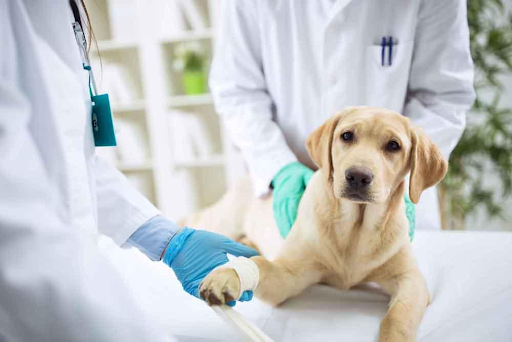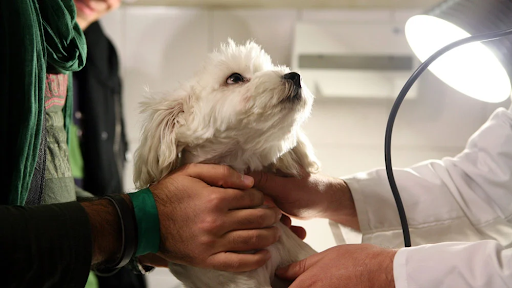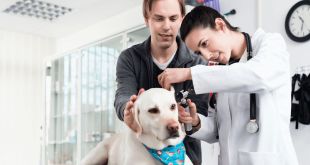There are many reasons why your dog might need veterinarian assistance. You need to be careful if your dog is near a hot tub, and in general near water, it can be dangerous for him.
However, spas bring many benefits to people. For more experience, you can check out the Intex hot tubs.
If your dog still needs urgent help, the most important thing is to show your dog to a professional veterinarian right away.
This article will introduce you to what you need to know about emergency care for dogs and how it can help save their lives when they need emergency help.
Signs you need to get your pet to the emergency room
Fainting, sudden collapse, unconsciousness, disorientation, or seizures
Fainting, sudden collapse, unconsciousness, disorientation or seizures are all symptoms of an urgent health issue in dogs and should be treated right away.
These could also indicate a serious condition like poisoning or diabetic crisis. If your dog faints, becomes unconscious, or experiences seizures you should get them to a veterinarian immediately.
Weakness, inability to stand, wobbling, or dragging hind legs
Weakness, inability to stand, wobbling, or dragging hind legs are some of the signs that your dog may have injured itself in a way that requires immediate veterinary care.
There are many things you can do at home to make them more comfortable, but there is also potential for serious injuries which require urgent treatment by an emergency veterinarian.
Lack of appetite, repeated vomiting, diarrhea, not drinking water, or unproductive retching
It’s a sign of an animal is sick. Even though dogs are known to hide their pain, there are certain signals that you should watch out for if your dog is not feeling well. For example, lethargy and loss of appetite can be a sign of something serious like pancreatitis or parasites.
Difficulty or labored breathing, choking, or non-stop coughing
If your dog is struggling for breath you should take them to the vet immediately – it’s a serious matter and they could go into respiratory distress.
This can be an allergic reaction to something like bug bites or food allergies that are causing this sudden difficulty in breathing.
Squinting, a swollen eye, or a bleeding eye, nose, or mouth
If you notice any of these symptoms, be sure to bring your dog to the vet immediately. Because if they are suffering from an eye injury, it can be very dangerous to your dog’s health if not treated properly.
Excessive panting
Panting is a normal way for dogs to regulate their temperature, but excessive panting can be an indication of heatstroke or another critical issue.
If your dog’s normally quiet and calm while they’re outside if you notice them getting more excited than usual about going outside it could mean that the weather has become too hot for comfort.
Make sure they have plenty of water and a cool place to rest if the weather is particularly warm. Also, do not forget to show it to your veterinarian, to avoid negative consequences.
Essential first aid tips for pet emergencies
- Keep a pet first aid kit on hand at all times.
It should contain an emergency blanket, tweezers, scissors, non-adhesive bandages of various sizes, and gauze pads to stop bleeding. You can purchase readymade kits online or create your own with items from the drug store.
- If you suspect that your dog has ingested poison, do not try to induce vomiting.
Call the ASPCA Animal Poison Control Center or your vet for advice instead of inducing vomiting yourself as it can be dangerous and sometimes even more toxic.
- If your dog is bleeding profusely, apply pressure with a clean towel or sheet wrapped firmly around the wound.
Apply direct pressure on the affected area and elevate it to reduce blood flow until you can get him or her medical attention.
If there is any object embedded in the wound, do not remove it as this might cause more damage; instead, take your dog to an emergency vet immediately for treatment.
- Never apply ice directly onto a wounded area.
Because ice can cause further damage to the tissue, it should only be used on swelling for a short period. After applying ice, wrap your dog’s injury with an elastic bandage or compression pad.
- If your dog has been in an accident, move him or her away from the vehicle or other objects that could cause further injury.
Call for emergency assistance immediately and keep your pet still until help arrives to avoid causing more damage to his spine, neck, or internal organs.
- Try not to panic in case of an accident.
Panic can make you act in ways that are not helpful for your pet and may worsen the situation, so keep your head clear if there is any chance of injury or loss of life.
- If possible try to stay calm while you transport your pet to a vet by keeping his spine as straight as possible using something like a blanket to support him or her during the trip.
- If your dog is choking, don’t panic, and do not administer anything orally into his mouth that could cause further obstruction of the airway.
Instead, perform a finger sweep by inserting one finger along their tongue to push any obstructions out while supporting his neck with your other hand.
- In case of a seizure, keep the dog’s head and neck still to prevent him from biting his tongue.
Place something soft under his head like a sweatshirt or towel and try to protect him from hitting anything hard with his teeth until he regains consciousness (which can last anywhere between one minute and 24 hours).
- Give your pet plenty of water when he regains consciousness, but do not force him to drink if his mouth is injured.
Keep your dog quiet and comfortable until you can get them medical attention following a seizure or other trauma that may have caused internal injuries.
Conclusion
Pets can be a part of the family and as such, require some additional attention in case of emergencies. Emergency care for dogs is not the same as with humans but it does require a lot of caution and common sense to avoid aggravating injuries.
 DogExpress
DogExpress




















 in Chandigarh, India.
in Chandigarh, India. 

